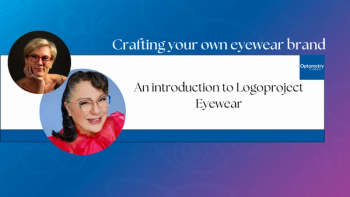Neurotrophic keratitis (NK) remains a vastly underdiagnosed condition, especially in post-operative cataract patients. Despite being less visible than other ocular surface disorders, its consequences—including persistent epithelial defects, phantom ocular pain, and poor visual outcomes—can be significant. At ASCRS 2025, Brett Bielory, MD, presented a poster that explored the role of cryopreserved amniotic membrane (CAM) in the management of NK, with early data pointing toward improved outcomes and symptom relief.
Cryopreserved amniotic membrane as a cross-specialty tool
Key takeaways for optometrsits
- Cryopreserved amniotic membrane shows promise in treating early-stage neurotrophic keratitis, especially post-cataract surgery.
- Corneal sensitivity testing should be a routine part of pre-op evaluation for cataract patients with dry eye symptoms.
- Early detection and treatment of NK can prevent long-term complications and enhance visual recovery.
- Stage 1 NK may be hiding in plain sight under the guise of severe dry eye—stay vigilant.
- CAM is emerging as a viable adjunct therapy for both diagnostic clarity and therapeutic success.
Cryopreserved amniotic membrane has long been used in orthopedic, podiatric, and urologic fields, but its application in ophthalmology—particularly for NK—is gaining traction. CAM’s regenerative properties help promote wound healing, reduce scarring, and modulate inflammation, making it ideal for the ocular surface. In this presentation, the focus was specifically on gamma-irradiated, high-preservation CAM and its benefits in early-stage NK.
Understanding the link between cataract surgery and NK
Cataract surgery, while routine, can act as an inciting event for patients with underlying dry eye or subclinical NK. The speaker noted a pattern of patients with “pain without stain” or “stain without pain” in the post-operative period—symptoms often missed or attributed to dry eye alone. In reality, many of these patients may be experiencing early-stage NK, particularly Stage 1, characterized by diffuse epithelial keratopathy.
Testing and treatment
The speaker emphasized the importance of incorporating corneal sensitivity testing into pre-operative workups. This aligns with the 2025 ASCRS Ocular Surface Disease Protocol, which now includes such testing as a standard of care. By detecting reduced corneal nerve function early, clinicians can better identify candidates for CAM therapy or recombinant nerve growth factor treatment.
In a small case series of three patients, CAM treatment led to significant improvements in corneal sensitivity, epithelial staining, and subjective visual outcomes. This suggests that CAM may help bridge the gap between diagnosis and recovery in patients with early-stage NK.
Raising clinical awareness
This poster presentation serves as a critical wake-up call to the optometric community. NK, particularly in its early stages, mimics other forms of ocular surface disease and is easy to overlook. However, by raising awareness and applying targeted therapies like CAM, optometrists can significantly improve surgical outcomes and long-term ocular health for their patients.














































.png)


